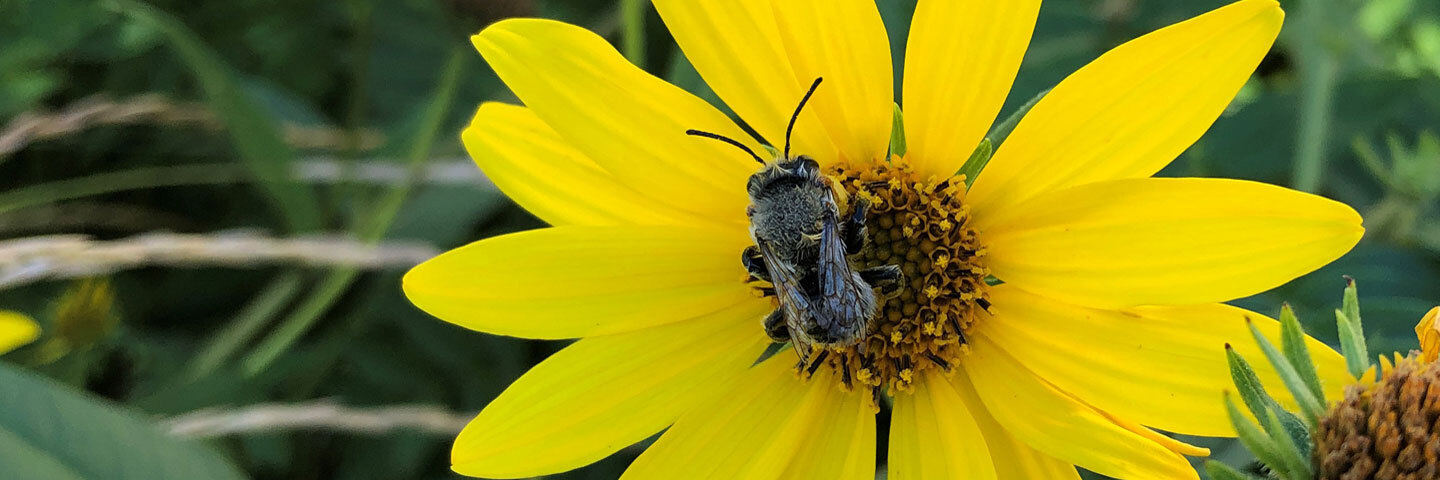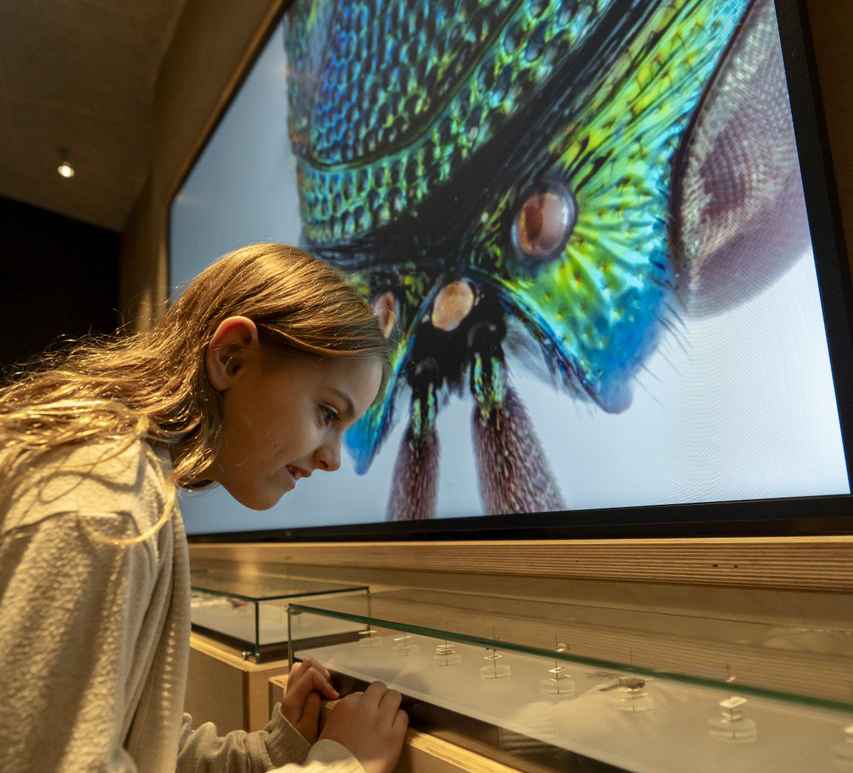Our mandate is to further our scientific understanding and public appreciation of the plants and animals that make up Saskatchewan’s diverse ecosystems. Our scientists lead research programs in the fields of vertebrate and invertebrate zoology while presiding over the provincial collections in these fields.
Our Ronald R. Hooper Entomology collection consists of approximately 250,000 insects (esp. bees, beetles, moths and butterflies). Our vertebrate collections consist of about 10,000 birds, 3,700 mammals, 500 reptiles and amphibians and 300 fish. We have about 6,500 vascular plants in our botany collection.
- Ornithology | Canadensys | GBIF
- Mammalogy | Canadensys | GBIF
- Herpetology | Canadensys | GBIF
- Ichthyology | Canadensys | GBIF
- Owl Pellets | Canadensys | GBIF
We have a long history of activities in the field of species conservation in Saskatchewan. Our scientists are studying some of Saskatchewan's rarest and most endangered species, including Burrowing Owls, Eastern Yellow-bellied Racers and Western Bumblebees. We are also studying some of Saskatchewan’s more common, but no less interesting species.
Saskatchewan is a large province that covers many ecological regions and the province is home to thousands of species of plants, animals, and fungi. The job of the scientists at the Royal Saskatchewan Museum is to understand Saskatchewan’s natural heritage and to educate and inspire people about the natural world around them!
If you have inquiries regarding our collections, please contact our curators directly.
✉ Curator of Vertebrate Zoology | Dr. Ryan Fisher
✉ Curator of Invertebrate Zoology | Dr. Cory Sheffield
Donating Specimens
As the keeper of the Provincial Collections in natural history, the RSM depends on donations to permanently document the province’s natural history and ensure that specimens and their data are forever available for scientific study.
People can happen upon dead animals by chance (e.g. road-kills, window strikes) or as part of their activities as biologists, consultants, ranchers, wildlife rehabilitators, conservation officers, veterinarians, trappers/fishers/hunters, zoos etc. The RSM wants everyone to salvage specimens and donate them to the museum.
The RSM encourages donations of all specimens (wild, domestic, native, exotic), especially those that are in reasonably good condition and come with associated collection-data (date and location). Rare or unique specimens in poor condition can still provide value to the collections (e.g. feathers, skeleton, skull).
How to Donate Salvaged Specimens
- Contain | Place the specimen in a plastic bag.
- Label | Record the date and a location of where the animal was found on a slip of paper and place it with the specimen in the bag.
- Freeze | Put the bagged specimen in a freezer.
- Deliver | Bring the specimen to the front desk of the RSM during business hours (preferably between 3 p.m. and 5 p.m.) or contact an RSM curator to make other arrangements as soon as possible. Please do not store specimens for long periods of time.
Important Notes
- Any person who handles a dead animal should be aware of potential health hazards. Some animals carry harmful pathogens. Use gloves, and always be sure to wash your hands afterwards.
- The RSM does not support anyone killing animals specifically for the purpose of donating them.
- The RSM will only accept specimens acquired in a legal (Saskatchewan Wildlife Act, federal wildlife information) and ethical manner.
- It is illegal to possess migratory bird carcasses, feathers, etc, (federal migratory bird act), so bring specimens to the RSM as soon as possible.
- The RSM does not purchase wildlife specimens.
Donating Large Animals
Donating larger animals such a deer, bear, cougars, wolves, bison, livestock, or zoo animals can be logistically challenging but the RSM is eager to receive these donations. At a minimum, donating the skull is often the easiest (and is certainly welcomed) but the specimen is of greatest value when the museum is able to add complete skeletons to the collection. If hunters/trappers remove the fur or field-dress the animal, we are very happy to take the remainder of the carcass. If RSM staff needs to travel and pick up a whole specimen, we have done that too. We very much encourage people to work with the RSM curator to find a way to donate specimens.
Donating Taxidermy
The RSM occasionally accepts mounted specimens, provided they have precise collection information. Please contact an RSM Curator to discuss any possible donations.
Donating Insect and Voucher collections
The RSM is very happy to receive donations of larger collections of specimens (e.g. insects, voucher specimens from research studies). The ability of the RSM to accommodate these donations is very much dependent on the level of curation of the collection. Ideally, a donated collection would already be properly identified, prepared, labelled, and in storage containers. Please contact an RSM Curator to discuss any possible donations.
Monetary Donations
Maintaining collections is expensive, and donations for collection improvements are most welcome! If you would like to make a cash donation to support the preservation of Saskatchewan’s natural history, please contact an RSM curator for further information.
If you have questions about donations, please contact
✉ Curatorial Assistant, Vertebrate Zoology | Danae Frier
✉ Curatorial Assistant, Invertebrate Zoology | Ryan Oram


